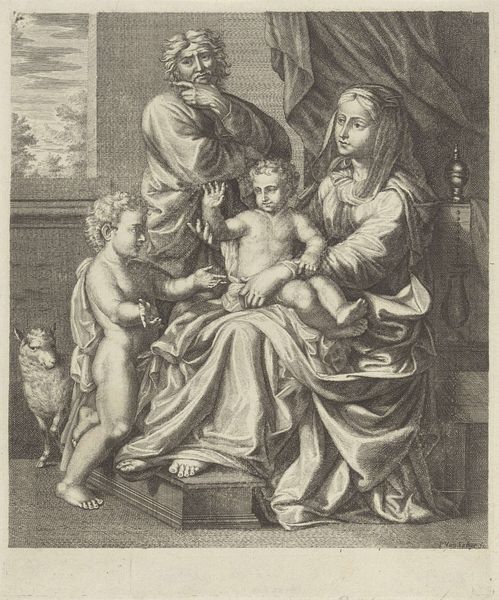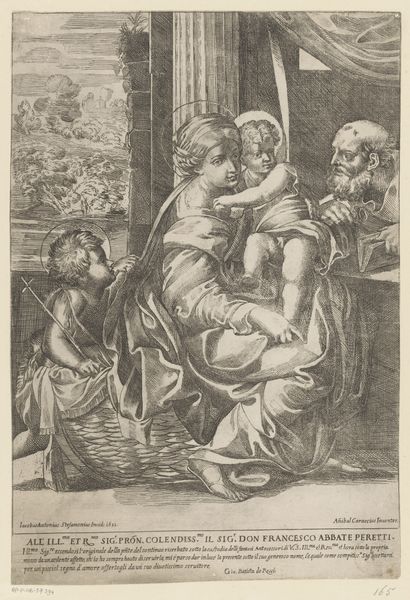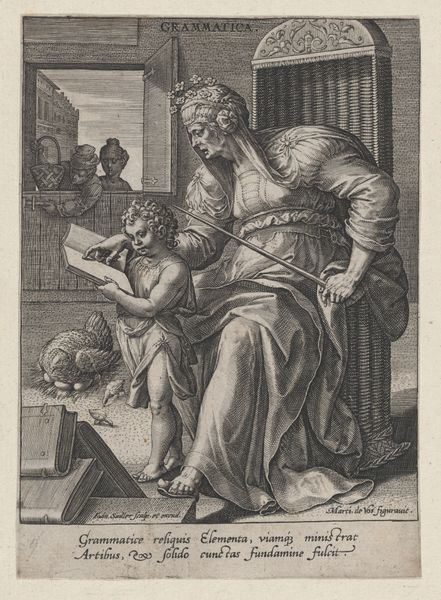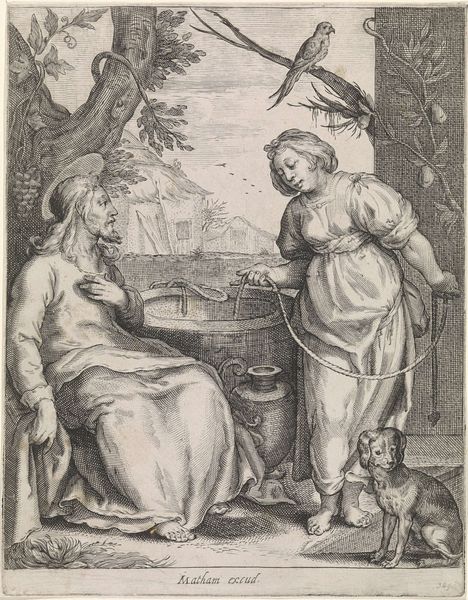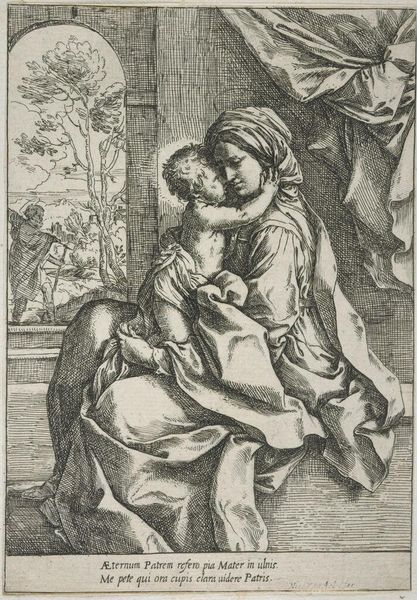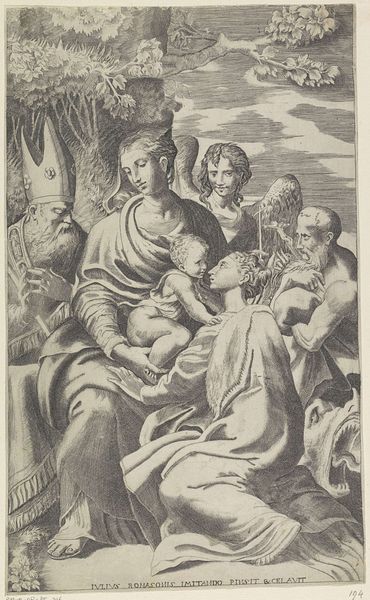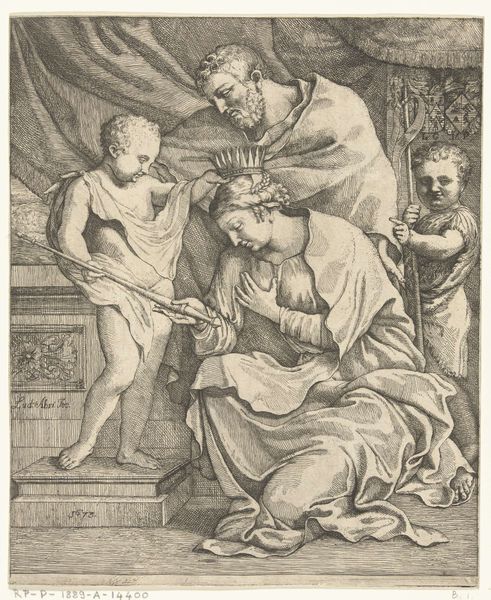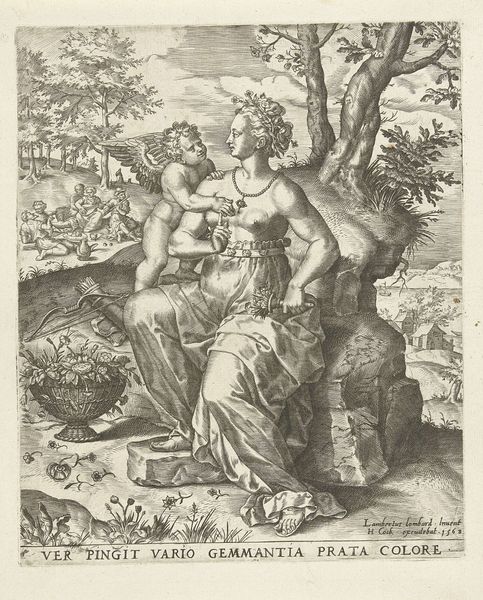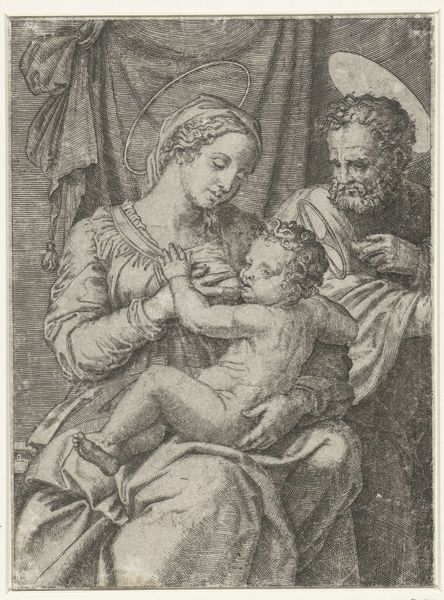
drawing, print, ink, engraving
#
drawing
#
ink drawing
# print
#
pen illustration
#
pen sketch
#
figuration
#
11_renaissance
#
ink
#
pen-ink sketch
#
genre-painting
#
history-painting
#
engraving
Dimensions: height 157 mm, width 111 mm
Copyright: Rijks Museum: Open Domain
Editor: This is "Rest on the Flight into Egypt" by Lambertus Suavius, created sometime between 1520 and 1567. It's an engraving, mainly in ink. I’m struck by how detailed the lines are; they give the image a very intricate feel. What can you tell me about the composition? Curator: The piece is defined by its linework; observe the density and direction. The artist has skillfully employed hatching and cross-hatching to articulate form and volume, creating depth and shadow. How do you read the contrast between the detailed foreground and the softer background elements? Editor: I guess the background, with its landscape and figures on a donkey, becomes a secondary narrative element, less important than the central family. It almost feels like it's fading into the distance because the lines are less defined. Curator: Precisely. This conscious decision draws our attention to the Virgin, Child, and Joseph. Examine the interplay between the figures and the architecture on the right-hand side. Note how the Virgin’s garment falls toward a pedestal. The structural positioning is not accidental. What interpretation can we posit when regarding that compositional alignment? Editor: It feels like it’s grounding them, like they’re connected to a foundation, maybe suggesting stability. I hadn't really noticed the folds of the fabric until you pointed that out. Curator: Indeed. It is through careful visual analysis such as this that the structural decisions of the artist begin to unfold before us, bringing ever-greater insight into the construction of meaning within the image. Editor: It’s amazing how much can be gleaned just by focusing on the lines and forms themselves! Thanks for walking me through this. Curator: My pleasure. I learned from our discussion as well, through revisiting these observations in dialogue with another's perception.
Comments
No comments
Be the first to comment and join the conversation on the ultimate creative platform.
